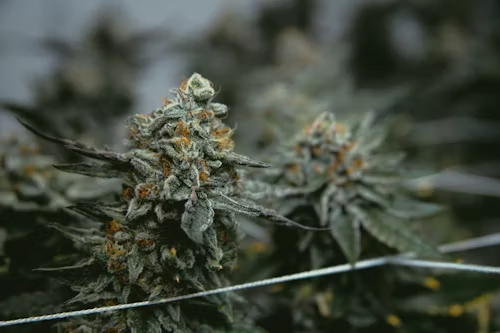Chronic pain affects millions of people worldwide, and for many, the search for effective relief can be a daily struggle. Traditionally, opioid medications have been prescribed to manage persistent pain, but they come with significant risks, including dependency, tolerance, and severe side effects. In recent years, medical marijuana has emerged as a promising alternative for pain management, offering patients a natural and safer approach to alleviate chronic discomfort.
Understanding Chronic Pain
Chronic pain is defined as pain that persists for more than three to six months, often continuing even after the initial injury or cause has healed. It can stem from a variety of conditions, including arthritis, fibromyalgia, neuropathy, and back injuries. The impact of chronic pain goes beyond physical discomfort, affecting mental health, sleep quality, and overall quality of life. For individuals struggling with ongoing pain, finding a treatment that reduces symptoms without introducing additional health risks is crucial.
Medical Marijuana as a Natural Alternative
Medical marijuana, which includes compounds like THC (tetrahydrocannabinol) and CBD (cannabidiol), interacts with the body’s endocannabinoid system. This system plays a vital role in regulating pain, mood, inflammation, and other physiological processes. THC binds to cannabinoid receptors in the brain and nervous system, which can reduce the perception of pain and promote relaxation. Meanwhile, CBD provides anti-inflammatory and analgesic effects without causing psychoactive effects.
Unlike opioids, medical marijuana does not carry a high risk of respiratory depression or fatal overdose, making it a safer long-term option for chronic pain sufferers. Studies have shown that patients using medical cannabis experience significant reductions in pain intensity, improved mobility, and enhanced overall well-being.
Reducing Dependence on Opioids
One of the most important benefits of medical marijuana is its potential to reduce reliance on opioid medications. Opioids work by altering the brain’s perception of pain but often lead to tolerance, meaning patients require higher doses over time. Long-term opioid use can also lead to addiction, withdrawal symptoms, and dangerous side effects such as constipation, nausea, and dizziness.
By contrast, medical marijuana provides an alternative pathway for pain management that is less likely to lead to dependence. Many patients report being able to lower their opioid dosage—or eliminate opioids entirely—after incorporating medical cannabis into their treatment regimen. This shift not only decreases the risks associated with opioid use but also empowers patients to take control of their own pain management strategy.
Accessing Medical Marijuana Legally
For patients seeking legal access, obtaining the proper documentation is essential. In Hawaii, individuals must secure a Hawaii medical marijuana card to purchase cannabis legally for therapeutic purposes. This card confirms that a patient qualifies under the state’s medical cannabis program, granting access to licensed dispensaries and regulated products.
To obtain the card, patients typically need a recommendation from a qualified physician confirming a chronic pain condition or another qualifying medical issue. Documentation is submitted to the state program, and upon approval, the Hawaii medical marijuana card allows patients to buy high-quality, lab-tested cannabis products safely and legally. This ensures that those using medical marijuana are protected under state law while having access to reliable and effective pain management options.
Methods of Consumption
Medical marijuana is available in multiple forms, allowing patients to tailor treatment to their needs. Options include smoking, vaping, edibles like gummies, tinctures, and topicals. Each method has different onset times and durations, letting patients choose the best approach for sustained or quick relief. Gummies, in particular, are valued for their discreet nature, predictable dosing, and longer-lasting effects compared to smoking or vaping.
Supporting Overall Well-Being
Beyond direct pain relief, medical marijuana can improve overall quality of life. Patients often experience better sleep, reduced anxiety, and enhanced mood—all factors that contribute to coping with chronic pain. Improved sleep supports muscle repair and reduces inflammation, complementing the analgesic effects of THC and CBD.
Conclusion
Medical marijuana represents a natural, effective alternative for managing chronic pain without the risks associated with opioids. By incorporating cannabis into a comprehensive pain management plan, patients can reduce pain, improve mobility, and enhance overall well-being. With proper guidance and legal access, medical marijuana can become a valuable tool in helping patients regain control over their health.

